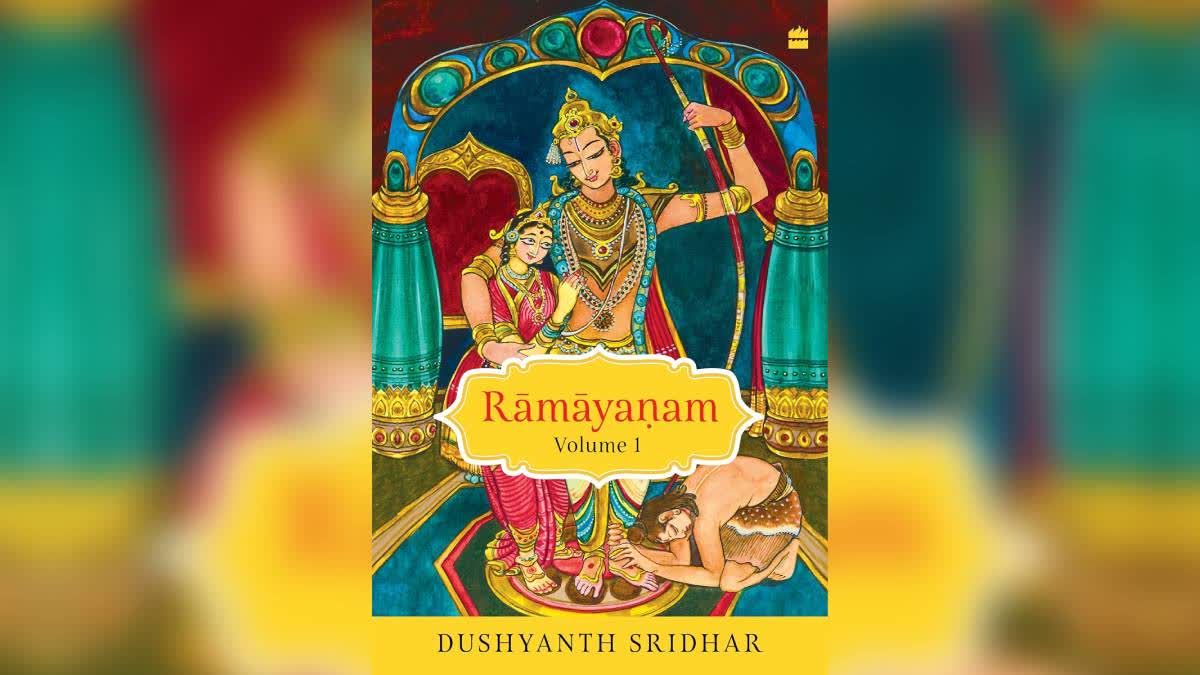New Delhi:Dushyanth Sridhar, an engineer from BITS Pilani, has made a name for himself as a religious discourse giver and author with his latest book, "Ramayanam", published by Harper Collins India.
The book is framed as a dialogue between Valmiki and Narad, covering a wide range of topics across 108 chapters. It opens with the theme of Sita's abandonment and includes discussions on figures like Rama's sister, Shanta.
In an exclusive interview with ETV Bharat, Dushyanth spoke about his journey as a writer and revealed plans for future volumes that will delve deeper into the grammar of "Ramayanam". His aim is to present these timeless narratives in a way that resonates with contemporary readers.
He told ETV Bharat that today, not everyone is able to read the entire Ramayana written in Sanskrit or other languages. However, it's essential for everyone, especially the younger generation, to be familiar with these texts. With this goal in mind, a new version of the Ramayana has been created in simple language. The second volume of the book is expected to be released next year, covering the remaining parts of the Ramayana.
The book "Rāmāyaṇaṁ" begins with the Uttara Kanda, where Sita is joyfully anticipating the birth of her child with Rama, unaware that her life is about to change drastically with her impending exile. To set the stage for this epic tale, Dushyanth also introduced Valmiki’s background story to provide context for the unfolding events.
The narrative unfolds through engaging dialogues between Valmiki and Narada, which provides insight and depth throughout the story. We witness the events leading up to the births Rama and his noble brothers, while also exploring the poignant tales of Shanta and Rishyashringa. The adventures of Rama and Lakshmana with Vishwamitra are highlighted, leading up to the beautiful union of Sita and Rama in marriage.
In his book he described the birth of Rama and his brothers in chapter 11 as 'Peerless Rajakumaras are Born'. He writes, after dwelling in Dasaratha's mind for 3 months and Kaushalya's womb for 9 months, in the month of Vishnu, also called Chaitra and in the nakshatra of Punarvasu a son was born to Kaushalya. The child was replete with auspicious marks such as exceptionally long arms and a voice resembling the sound of Kettledrum. From the womb of Kaikeyi was born a son when the Pusya Naksharta was in the ascendant, while Sumitra gave birth to valiant twins in the Ashlesha nakshatra.
The streets of Ayodhya were strewn with the powder of gems brought from the various 'rajyas'. The 'praja' danced with joy while the raja sent various gifts to them. The brahmins were delighted to see cows of superior quality arrive in the backyard, Dushyanth narrated in the book.
Dushyanth also mentioned that whether we refer to the Ramcharitmanas or the Valmiki Ramayana, the concepts presented in these texts are further elaborated in the Puranas. This book aims to provide readers with comprehensive information about the Ramayana, along with insights from these other texts, so they don’t have to search through various books for additional knowledge.
Read more
- Opinion | Is 'Uttara Rāmāyaṇa' Authentic?
- Harmony On Stage: Inmates Of All Faiths Unite For Ramlila At Haridwar Jail
